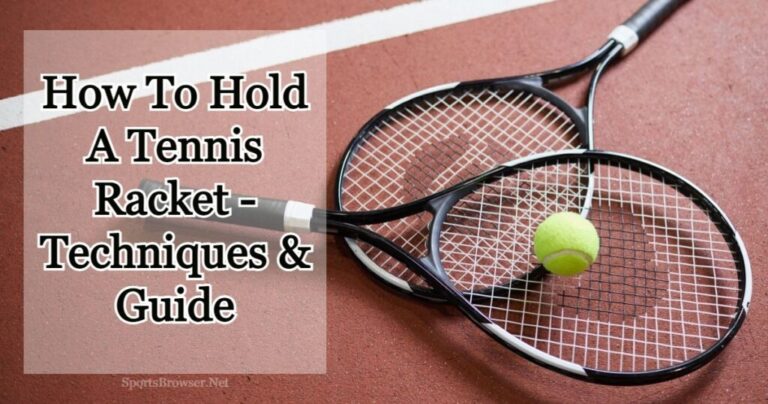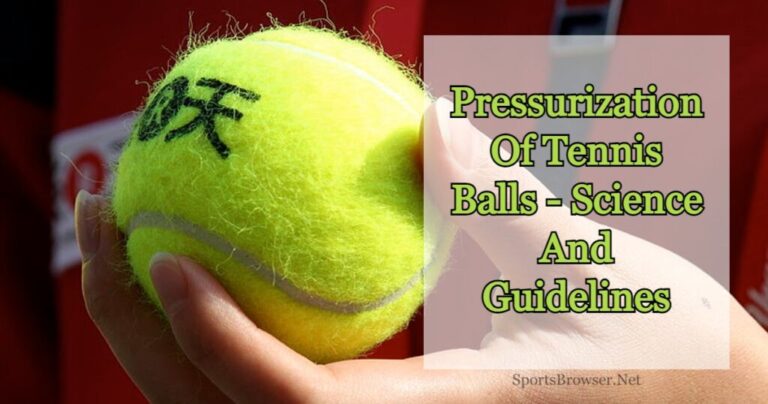What Does Ad Mean In Tennis? Comprehensive Guide In 2024
Tennis is now enjoyed and played by millions all over this blue plane. However, not everyone knows the tennis terms used in amateur and professional matches. And there are many such terms that exist. So, to start with, do you know what an ad in tennis really means?
Ad in tennis refers to advantage, and it is a crucial aspect of the game as it determines the winner of a close set. The ad system is used in traditional tennis scoring, where a player can either win a game by scoring four points or by gaining a two-point advantage over their opponent.
But this is not all as there are several other rules regarding ad (advantage) in tennis, a truly difficult sport. Many pro players also use this on their side to win over their opponents. Now, with the SportsMonkie team, let’s take a dive into the realm of tennis rules, especially ad.
How A Player Can Get An Ad In Tennis?
A player can get an ad in tennis when they are ahead by one point in a deuce game. A deuce game occurs when both players have scored three points each.
When a player scores a fourth point, they win the game, but if they only have a three-point advantage, they must win by two clear points to secure the game.
In this scenario, the player with the advantage is said to have an ad.
Difference Between Ad-In and Ad-Out
The difference between “ad-in” and “ad-out” lies in the manner in which a player wins the game. If a player wins the game after they have served, it is referred to as an “ad-out.”
On the other hand, if a player wins the game on their opponent’s serve, it is referred to as an “ad-in.”
What Is No-Ad Scoring System?
No-ad scoring is an alternative scoring system used in tennis. In this system, a player only needs to win one more point than their opponent to win the game.
This scoring system is used in many lower-level tournaments, and it eliminates the need for advantage points and deuce games.
Read More: How To Hold A Tennis Racket? Techniques And Improvement Tips
5 Most Number Of Ad In International Male Competitions
Now, we will take a dive into the recent history of Grand Slams to know about the most ad executed in a single match in international male Opens.
| Player | Opponent | Year | Ad in Match |
| Rafael Nadal | Novak Djokovic | 2012 Australian Open | 52 |
| Novak Djokovic | Rafael Nadal | 2013 Australian Open | 49 |
| Rafael Nadal | Novak Djokovic | 2014 Australian Open | 43 |
| Rafael Nadal | Novak Djokovic | 2012 French Open | 38 |
| Novak Djokovic | Rafael Nadal | 2011 Australian Open | 37 |
Difference Of Ad Between Men’s And Women’s Tennis
In terms of ad between male and female tennis, there is no significant difference. Both men and women use the same scoring system, and the ad rules apply equally to both genders.
Some of the greatest female tennis players, such as Serena Williams and her sister Venus, are known for scoring high ad in their games.

5 Most Number Of Ad In International Women’s Opens
Almost all the female competitions, such as the Wimbledon or US Open, have witnessed a good number of ad in matches. Here are the top 5 matches that have seen the highest number of Ad.
| Player | Opponent | Year | Ad in Match |
| Serena Williams | Victoria Azarenka | 2013 Australian Open | 43 |
| Serena Williams | Maria Sharapova | 2004 Wimbledon | 37 |
| Serena Williams | Maria Sharapova | 2003 Australian Open | 35 |
| Venus Williams | Serena Williams | 2002 US Open | 32 |
| Serena Williams | Venus Williams | 2001 US Open | 31 |
You May Like: Top 10 Best Tennis Courts In The World Right Now
Key Takeaways
Ad or advantage always plays a crucial role in the overall scoring system in tennis. And many pro players repeatedly use ad to win their matches over their opponents. A match can also be finished in a shorter time if there is more number of ad.
So, that’s all we need to tell you about the meaning and logic behind ad. Feel free to drop your queries in the comment box below.







